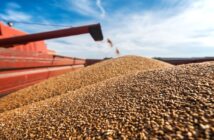NRM has updated its interactive soil map alongside its annual soil summary report for last year.
The organisation says it will help growers benchmark their results against other farms in the same region with the same soil types and climatic conditions, providing the most relevant data to better inform their agricultural decisions.
The interactive map follows the recent publication of NRM’s 2023-2024 soil summary. Both include consolidated, anonymised data from thousands of soil samples collected between June 2023 to May 2024 from farms across the UK. By selecting their region and county, farmers and advisors can localise nutrient summaries, gaining information and insights tailored to their specific needs. Data for phosphorus, potassium, magnesium and pH is split out by arable and grassland and summarised according to the 9th edition of the RB209.
‘This soil summary has once again confirmed a trend that we’ve observed for the last 30 years: that most soils are deficient in the three key nutrients,’ said Sajjad Awan, soil and crop nutrition agronomist at NRM. ‘It’s also interesting to look at trends and variations across the different regions in the UK to see how we’re doing on a more local level. An interesting insight is that we have seen large regional variation in soil phosphorus levels, influenced by a variety of geological factors, land management, crop and nutrient management practices.
‘For example, available phosphorus levels are low in Yorkshire, potentially due to the region’s higher soil pH as a result of chalky boulder soils locking up the nutrient with calcium. In contrast, the South East has higher phosphorus levels. This likely reflects more frequent fertiliser use, including inorganic and organic forms such as biosolids, probably driven by the need to support high-value cropping systems.
Furthermore, NRM’s GrainCheck data shows that the actual grain phosphorus removal is lower compared to the offtake values described in RB209. This could be potentially contributing towards higher soil phosphorus levels.’
NRM’s interactive soil map makes nutrient data more actionable than ever, suggests Sophie Cath, senior business development manager. “At Cawood, we’re committed to helping build collective knowledge across the agricultural industry
“As the UK’s leading provider of agronomic analysis in the UK, Cawood is in a unique position to gather a large amount of soil and crop data for representative results. By doing so, we can help farmers improve their productivity across the whole of the UK whilst transitioning to more sustainable practices.
“The interactive soil map is a handy, innovative solution for our customers to easily see how they compare with the rest of the UK and help them meet their goals.’




